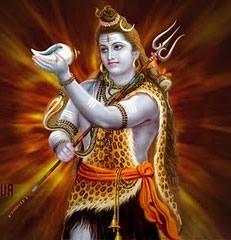Suta Maha Muni indicated certain premonitions of untoward tidings and of death when human beings ought to intensify virtuous deeds as the last breathing might arrive. The visions of Arundhati, Dhruva and the Celestial routes would mean that a person concerned might not last more than a year. Vision of Surya without rays and Agni with rays might indicate an eleven month end ahead; Mutra and Pureesha as gold and silver indicates that the end might approach within ten months; seeing a Golden Tree, or visit of a Gandharva Nagari or visions of Preta-Piscachas might allow a further life of nine months more; dream of a very huge monster or a skeletal figure could forewarn an eight month ahead; image of dust storm or muddy rain could indicate the end within seven months; a dream of a crow, or a kite or dove or any other meat-eating bird on a person’s head might presume death within six months; Straight lined crows flying on the sky could indicate death within the next four five months; thunders on a cloudless and clear sky or rainbow seen in a water body or a distorted image of one’s own self that the end might be within a couple of months; death is stated to be destined within a month when the person concerned would vision the self without head; an experience of the smell of a dead body or of unbearably rotten food could imagine that death might be withi some twenty five days; monkey dance while riding a chariot towards South might sign-post already; a black robed woman leading a person towards South, vision of a headless body , a naked Sanyasi dancing, red face and yellow cheeks are signs of death.
As the premonitions of one’s end is foreseen either dirctly or through dreams, then a wise person would immediately sit facing north before a lamp and peacefully concentrate on Parama Shiva and continue to be engaged in Dhyana by way of eyes of an idol or picture of Maha Deva,, ears by hearing hymns in praise of Him, smell Gandha and fragrance of flowers, mind and thought targetted to Him and Soul united with Him, and the whole body filled up with Omkara comprising three ‘Maatraas’ or Parts; the first Maatra is stated to be ‘Vidyuti’ or the Electric, the Second Maatra is ‘Taamasi’ and the final Maatra is Nirguna. ‘Pranava’ or Omkaara is like the Dhanush or a bow, Atma is described as the Arrowand Paramatma is the target. The person concerrned is to perform the Sadhana or the Holy Endeavour with steady mind and soul. In the word of OM there are Tri Maatraas of Akaara,Ukaara and Makaaraas, Tri Lokas, Tri Vedas, Tri Agnis, Tri Gunas and Tri Murtis. Akaara represents Bhu loka, Ukara of Bhuvar loka and Makaara the Swarloka withVyanjana in between. Omkara is Triloka maya; its head is Trivishtap, Prathama Maatra is hraswa or short, Dwiteeya Maatra is is Deergha or long and the ThirdMaatra is called ‘Pluta’. Those who practise Pranava is stated to enjoy the fruit of Ashwamedha Yagna.This would endow the Shakti and Power of Jitendriya, Pavitra and of Super Soul. This indeed is the Essence of ‘Paashupata Yoga’ by means of which the awareness of Jnaana, Brahmana, Ruk-Yajur-Saama Vedas and of Upanishads is automatically highlighted and ‘Shaswata Pada’ is secured. A highly committed and dedicated Namaskara to Shiva is like the ripe fruit on a tree swept by speedy wind power would fall on one’s own lap!
Indeed an intelligent person need not wait till premonitions of death are conveyed to perform the effective means of Virtue. Maharshis underlined the enormous advantage of Kshetra Darshana. Mahadeva himself narrated to Devi Parvati of a few Shiva Lingas in some places of repute:
Vaaraanasi manupraapya Darshayaamaasa Shankarah,
Avimukteshwaram Lingam Vaasam tatra chakaara saha/
Vaaraanassi Kurukshetra Shri Parvata Mahaalaey,
Tungeshvarey cha Kedaarey tatashaaney yoyatirbhavet/--
Naimishecha Kurukshetrey Gangaadwaarey cha Pushkarey—
Prayaagey vaa bhavenmoksha iha vaa matparigrahaat---
Jaigeeshvaya guhaa sreshthaa Yoginaam sthaanamishyatey
Kaivalyamnparamam yaati Devaanaamapi durlabham---
Vyaghreswara iti Khyato nityamannahamaashitah,
Na punargatim yaati drushtenam Vyaghrameeswaram/----
Shaileswara miti khyatam drushyataa miha chaadaraat
drushtetanmanujo Devi na Durgatimato vrajet—-
Sangameshwaramityevam khyaatam Jagatinmdryushyataam—--
Madhyameshwaramityevam khyaatam Sarva Suraasurai---
Puraa Jambukarupena Jagati khyatam Suraasuranamaskrutyam—
Drumachandeswaram naama Bhadreswaramanuttamam,
Shtaaneswaram tathaikaagatam Kaleshwaramajeswaram—
Amaresham Mahaakaayam Jyotisham Bhasmagaatrakam
yaani chaanyaani Punyaani sthaanaani mama Bhutaley—
Rameswaram cha paramam Vishnunaa yadpratishthitam,
Dakshina dwaara paarswey tu Kundaleswara meeswaram/
Purwadwaara sameepastham Triputaanthakamuttamam,
Vivruddham Girinaasaartham Devadeva namaskrutam---
Shringaatakeshwaram naama Shri Devyaa tu pratishthitam,
Mallikaarjunakam chaiva mama Vaasamidam Shubham—
Koteswram Mahaa tirtham Rudrakoti Ganaih Puraa,
Sevitam Devi Pashyaadya Sarvasmaadadhikam Shubham—
Gomandaleshwaram chaiva Nandaadyaih Supratishthitam,
Devaih Sarvestu Shakraadyaih sthaapitaani Varaananey---
Chandikeshwarakam Devi Chandikeshaa twamaatmajaa,
Chandikaa nirmitam Sthaanamambikaa Tirthamuttamam/
( The above is a brief mention of Tirthas including Varanasi / Avamukteshwara, Kurukshetra, Shri Parvata, Tungeshwara, Kedaara, Naimisha, Gangadwara, PushkaraPryaga, Jaageshwara, Vyaaghreshwara, Shaileshwara, Sangameshwara, Madhyeshwara, Jambukeshwara, Bhadreswara, Sthaaneshwara, Kaleswara, Amareshwara, Rameshwara, Kundaleshwara, Koteshwara, Tripuraantakeshwara, Shringatakeshwara / Mallikarjuna; Gomandaleshwara etc.)’

 Prev:‘Panchaakshara Japa Mahatmya’and ‘Dhyana Yajna’
Prev:‘Panchaakshara Japa Mahatmya’and ‘Dhyana Yajna’ Next:‘Panchaakshara Japa Mahatmya’and ‘Dhyana Yajna’
Next:‘Panchaakshara Japa Mahatmya’and ‘Dhyana Yajna’